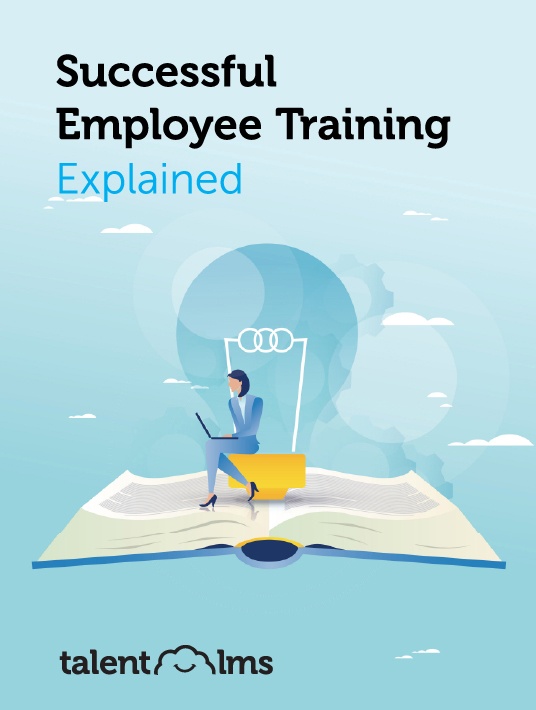Planning Out Your Employee Training Program
Are you investing enough time in planning your employee training program? Some say that, to succeed in life, you need to have a plan and stick to it. Others say it’s best to go with the flow. When it comes to employee training, a detailed training plan is clearly the choice.

A training plan that outlines the steps of training development will help you streamline the process and save you from mistakes you could have easily avoided. In this chapter, you’ll discover the checklist for a successful employee training course.
Conduct A Training Needs Analysis
What are the skill gaps in your workforce? Do you even need to develop employee training? And what type of training should you deploy? To answer these questions, you need to conduct a training needs analysis.
A training needs analysis is not some complex, scientific process. Just talk with managers and key stakeholders to uncover existing skill gaps that are a problem now or could become a problem in the future. If your company is planning to expand its services or implement new job processes, for example, employees will need to refresh their skills.
Conduct surveys or talk directly with employees to find out what they need. Customer service is also a department where you’ll find valuable information since customer complaints can point towards job-specific skill gaps or inefficient processes.
You might discover you don’t need to develop training at the moment but simply invest in better job tools. Or, you might need to create more than one training course. In this case, prioritize training according to urgency. When there’s an update in health and safety regulations, training staff on “Mastering small talk in the workplace” can wait.
Find Out More About Your Workforce
Your audience will impact critical decisions, such as how you will deliver training and which training tools you’ll use. To create a learner profile, these are the main characteristics to consider: Generational preferences and educational/ experience level.
For Gen-Z and Millennials, for example, you will need to offer mobile-friendly courses -- these two generations are keen mobile users! The difficulty level of the course must also match the current knowledge level of the learners. Conduct pre-assessments to know where your employees stand.
Type of workforce (deskless, remote, in-office, dispersed). For example, instructor-led training is not a viable option for global teams and rather hard to pull off for deskless and remote employees.
Digital literacy, in case you’re thinking about deploying online training. Some employees might need extra assistance in learning to use the training platform and communication tools.
Set Specific Training Goals
What do you want to achieve with this training course? The more narrow and specific your answer, the better. Setting 18 a specific goal increases your chances of hitting the mark. And it makes it simpler for you to better measure the results later. For example, a goal to “improve Customer Satisfaction Score by 5% until the end of the year” can be easily measured. Training goals are great for guiding you, but they might not mean as much to the employees. Employees need a more concrete picture of how their job will improve after the training. So break down your training goals to create learning objectives for your employees. To identify your learning objectives, ask the question, “How do I reach my training goal?”
Take Stock Of Your Budget And Resources
So far, you’ve discovered the skill gaps in your organization, and you’ve set training goals that will help you bridge these gaps and reach your organizational goals. You’re also aware of any unique needs of your employees. As you are planning your employee training program, you also need to answer basic questions regarding your budget and resources and the time frame available for training employees.
- How much can you spend on training courses? A tight budget makes online learning a more feasible option.
- Can you afford the services of a Subject Matter Expert and an instructor? If not, consider whether there’s someone qualified for the job in your company.
- Is there time to build a course from scratch? Whether online or in-person, training development takes time. If the need for training is pressuring, look for off-the-shelf options.
- Ιs there any material you could reuse? Sometimes, even guidelines created informally by your employees turn into PDF presentations or infographics.
- Do you have any training tools available, like a training platform or video creation tools?
Conclusion
The launch of an employee training program is not the time to be spontaneous. Creating and following a detailed training plan will help you have a better understanding of your needs and make better decisions throughout the development phase. Promoting your training courses with the help of your managers will also help create hype and build excitement among employees. Download the eBook Successful Employee Training Explained and find out how you can make the most out of your employee training.


